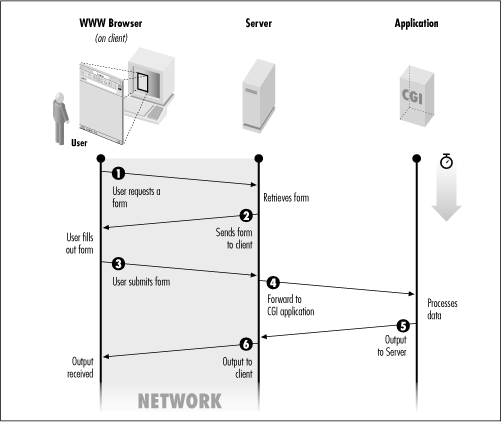19.2. Your CGI Program in Context
Figure 19.1 shows the relationships between a web browser, web server, and CGI program. When you click on a link while using your browser, there is a URL associated with the link. This URL specifies a web server and a resource accessible through that server. So the browser communicates with the server, requesting the given resource. If, say, the resource is an HTML fill-out form, the web server responds by downloading the form to the browser, which then displays the form for you to fill out.
Figure 19.1. Form interaction with CGI

Each text-input field on the form has a name (given in the form's HTML code) and an associated value, which is whatever you type into the field. The form itself is associated (via the HTML <FORM> tag) with a CGI program that processes the form input. When you fill out the form and click on "Submit", the browser accesses the URL of the CGI program. But first it tacks onto the end of the URL what is called a query string consisting of one or more name=value pairs; each name is the name of a text input field, and each value is the corresponding input you provided. So the URL to which the browser submits your form input looks something like this (where the query string is everything after the question mark):
http://www.SOMEWHERE.org/cgi-bin/some_cgi_prog?flavor=vanilla&size=double
In this case there are two name=value ...
Get Learning Perl, Second Edition now with the O’Reilly learning platform.
O’Reilly members experience books, live events, courses curated by job role, and more from O’Reilly and nearly 200 top publishers.

